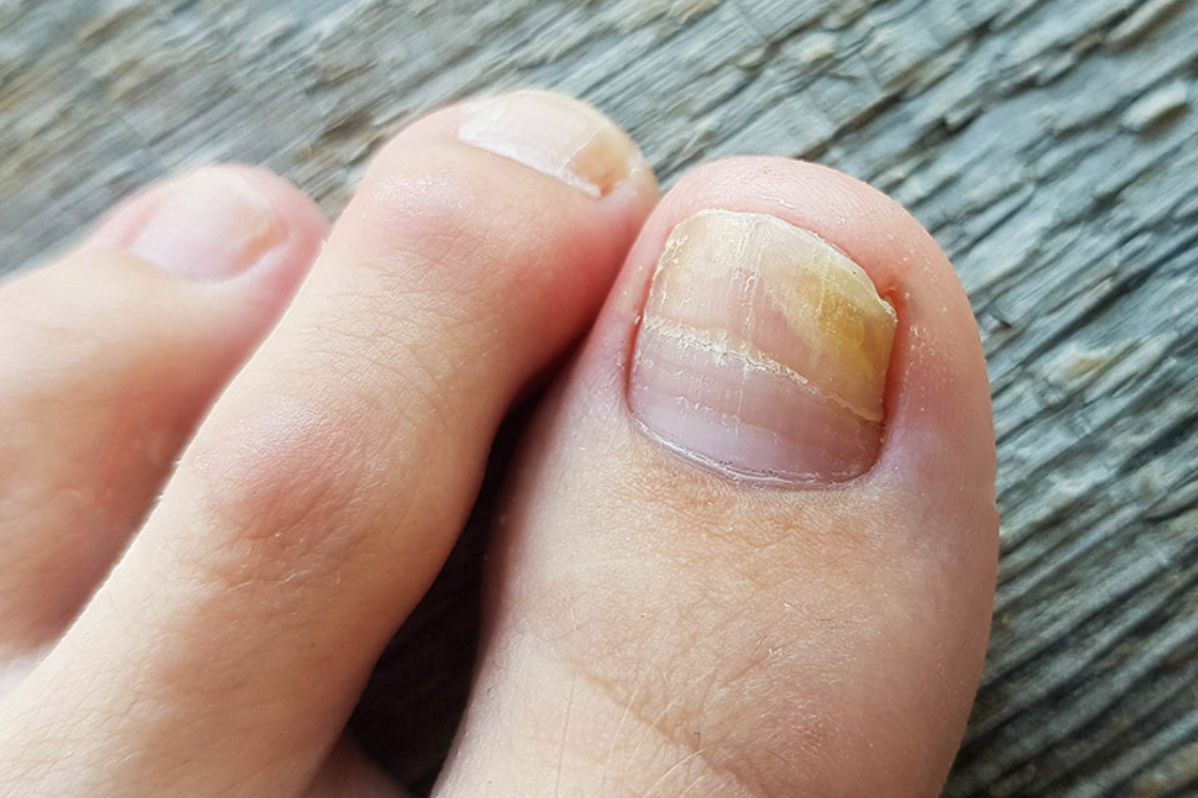
Onychomycosis: why do fingernails and toenails get fungus?
Nail fungus, in medical terms onychomycosis, is an infection that can affect fingernails and toenails, turning them white or yellowish and weakening them
If neglected, it can also lead to nail decay and detachment, as well as spread to neighboring nails.
Therefore, it is important not to underestimate it and to treat it promptly and in the correct way.
How onychomycosis forms
Onychomycosis is an infection of the nail that can be caused by several fungi (or mycetes), including Candida albicans, Trichophyton Rubrum (the most frequent responsible for interdigital forms), Trichophyton mentagrophytes and Epidermophyton floccosum.
Once these pathogenic microorganisms penetrate the nail, they attack and feed on keratin, which is the main substance of which the nail is composed. As a result, the nail wears down and weakens.
Infection can affect both fingernails and toenails.
Toenails are at greater risk of onychomycosis, as the warm moist environment created in shoes is fertile ground for the proliferation of these microorganisms.
Risk factors
Among the main risk factors that expose to the occurrence of this infection, in addition to the use of non-breathable footwear, are:
- walking barefoot in hot/humid public environments, such as swimming pools and gym locker rooms;
- excessive sweating;
- manicure/pedicure that is too aggressive with the removal of the cuticles around the nail attachment: if you remove the cuticle, which acts as a protective barrier against microorganisms, you facilitate the penetration of the fungus;
- circulatory disorders;
- diabetes;
- advanced age.
How onychomycosis manifests itself
Once the fungus has penetrated the nail, either from the lateral folds or the free edge, the infection progresses rapidly, causing it to flake off and white or greenish-yellow spots to appear on the nail.
Typically, the first sign of the presence of onychomycosis is the appearance of a small yellowish-white, or darker-colored spot on the margin of the nail plate, that is, the most superficial part.
This spot, over time, tends to extend to involve the entire nail, which may end up peeling away from the nail bed, i.e., the pink part underneath, crumbling: in this case we speak of dystrophic onychomycosis.
Other symptoms of the presence of fungal infection are:
- thickening of the nail with subungual hyperkeratosis;
- increased brittleness of the nail;
- unpleasant odor;
- accumulation of materials formed by residual keratin under the nail;
- pain in the ends of the fingers.
Infection generally starts on one nail, usually of the first finger, but later other fingers may also be involved.
Prevention of onychomycosis comes from adopting some good rules such as:
- dry hands, feet and the space between fingers carefully;
- do not walk barefoot in common humid environments;
- prefer natural fiber socks;
- favor open-toed shoes whenever possible;
- avoid removing cuticles and do not use harsh manicure products;
- do not share towels with people suffering from onychomycosis.
Nail tests to confirm the diagnosis: how they work
The first step, if you suspect you have onychomycosis, is to undergo a specialized dermatological examination.
The dermatology specialist, to complement the information gathered through the history and clinical examination, may request specific tests to confirm the diagnosis, namely direct microscopic observation followed by culture examination.
A piece of nail already detached from the nail bed is taken, then the nail bed is scratched with a scalpel to take the suspicious material.
This sample is divided into 2 parts and subjected to 2 examinations:
- the first is under a microscope to be able to observe any hyphae, i.e., fungal filaments up close, after macerating the nail piece with 30-40% potassium hydrate: already at this first stage it is possible to tell whether one is dealing with a mycosis;
- the second examination is carried out by placing small pieces of nail on plates containing culture media (i.e., the classic transparent laboratory discs): if mycetes are present, after 7-15 days colonies develop that appear as specks of various shapes and colors that correspond to the different fungi.
How to treat nail fungus
The earlier treatment is started, the better the chances of resolving the infection, limiting permanent damage to the nails.
The use of topical antifungal products in the form of nail polishes or creams to be applied directly to the affected area is indicated for the treatment of onychomycosis.
It is often necessary to also combine systemic therapy with drugs, again antifungal, such as Itraconazole, Fluconazole and Terbinafine.
During treatment, it is important to pay special attention to nail care, removing, where possible, the infected part and filing the superficial part with special products, which the specialist will recommend, so as to facilitate the penetration of the active ingredients in the nail polish or creams.
Treatment can last from a few months to years, depending on the extent of the infection.
In any case, these are long times, both because the keratin of the nail is hard and difficult to penetrate by drugs, and because of the physiological regeneration time of a nail, which ranges up to 6 months for fingernails and 9 to 12 months for toenails.
Natural remedies
One natural remedy that, due to its antibacterial and antifungal action, can be effective against onychomycosis is tea tree oil or melaleuca oil.
A couple of drops can be applied directly to the affected area up to 3 times a day.
Lavender oil is also often counted among natural treatments against nail fungus: like tea tree oil it can be applied directly to the nails or diluted in pedicure water.
Read Also:
Emergency Live Even More…Live: Download The New Free App Of Your Newspaper For IOS And Android
Onychophagia: My Child Bites His Nails, What To Do?
Russia, Doctors Detect Mucormycosis In Covid-19 Patients: What Causes The Fungal Infection?
Parasitology, What Is Schistosomiasis?


